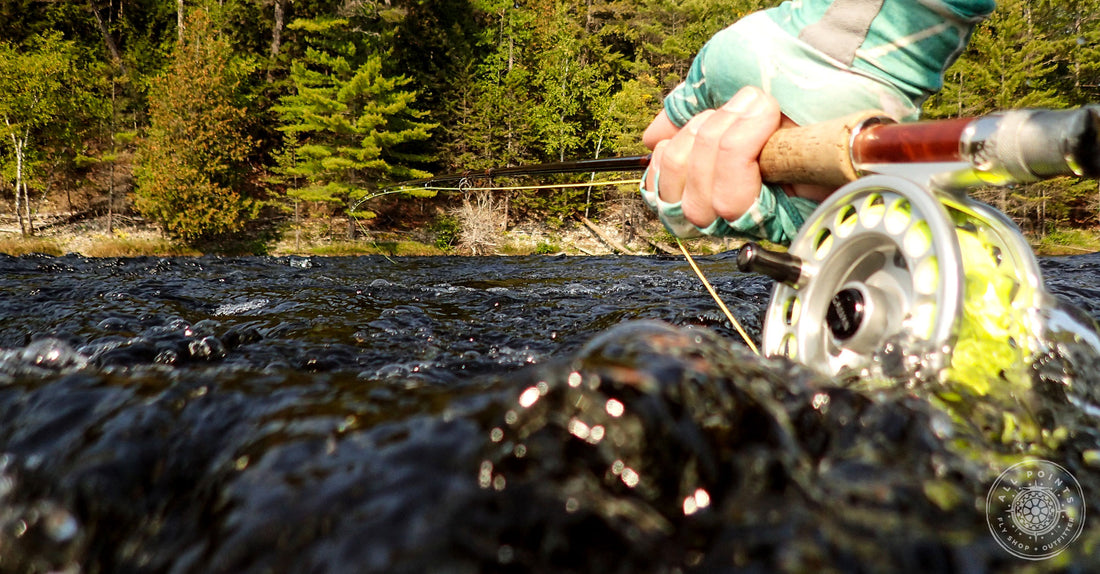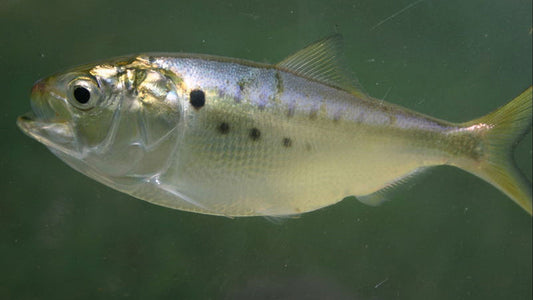
3 Reasons To NOT Use Tapered Leaders When Fishing A Sinking Line
Share
When trout fishermen are looking to get their flies deeper in the water column, a sinking tip or full sinking line is usually at-the-ready. Or, it's at least rigged up on a spare spool in their pack. In some situations split shot, or other forms of weight added to the leader, can get nymphs/wet flies below the surface. In this article I'm not speaking on nymph/indicator rigs etc., as those require floating lines. But when it's time to get particularly streamers down deep, a sinking (tip) line is incredibly effective...So with specifically a sinking line, the debate now turns to what leader is the best for this technique? Should you just use the same 9 foot tapered leader you were using for dry flies?
For the past 5 years or so, I have exclusively fished short pieces of straight fluorocarbon as my leader when I am using a sinking line (including intermediate lines). This goes for trout and striped bass rigs alike. Sections that are roughly 3-5 feet is plenty - any longer and it starts to lose it's efficiency. Plus, I will also rig 2X-0X on trout. When I try and explain this to some customers, I get a strange look at first...
"Do you see a lot of refusals then?"
I don't. I actually catch more fish. The reason for this is based off of three main factors.
1. Get'er down good!
A short, uniform in diameter, thin piece of fluorocarbon will sink much faster, cut through the water, and get the fly to the intended depth much more effectively than a tapered 9 foot leader. Fluorocarbon sinks better than monofilament (check out my article Fluoro vs Mono) and since it's thin from top to bottom, this also allows it to sink much faster. With a tapered leader, the fat (butt) section of the leader is very buoyant and makes it tough for the sinking (tip) to pull the entire leader down. Usually this just creates a big belly in the leader where your sinking tip is down but your fly is still in the top of the water column.

2. Not Leader Bashful
Fish are not leader shy when chasing a streamer. Unlike fishing dry flies or nymphs, fish do not have a lot of time to investigate your streamer before making a decision on it and they are also usually doing so pretty aggressively. Fish have to make a quick choice as to if that streamer looks good or not. Plus, that streamer is (should be) creating some good movement, and all of this really puts the leader mostly out of the equation. The added advantage of using 10-15lb tippet is also a great advantage as it essentially eliminates losing fish to tippet breaks or when those big fish smash that Grey Ghost, Barnes Special, or Black Ghost and snap you off. (BTW the fish below was taken on one of our Lockwood Beta Smelts)

3. Control Freak
I have a lot more control over my flies when I fish a short leader. Also the slightly stouter 2X-0X gives a good balance of movement and control. When I am stripping/swimming streamers through the water, I want to have full control and feel over where my fly is and what it's doing. Having a long leader creates a lot of small slack points in the leader when stripping. This eliminates feel, increases missed strikes, and does not provide good control/contact to your fly. When I fish a short leader I can feel the fly at almost every point of the retrieve and I can control how I swim that streamer much better.

I hope those tips help the next time you are out fishing down deep. Give it a try and let me know how it goes!
Photos + Words by: Josh Thelin



5 comments
Will a sink tip leader work for swinging wet flys keep the fly down till straight down stream then the fly rises in the current like a caddis or other bugs
Yes Frank! I used a very similar setup for striped bass as well. Makes a difference in the salt too!
I used his technique to great success on strippers this summer. Thanks for the great work Josh.
Yup! That’s a great rigging set-up Aaron. Also a good point about the loop knot – that is certainly a knot that’s ideal for streamer/baitfish techniques. Lots of movement – and a very strong knot!
I will 100% agree with Josh on this technique. I’ve been doing this for the past 10 years. I utilize a 20 lb butt section (nail knotted on when there’s no welded loop) with a perfection loop at the end. 12 inches in total. I’m able to connect a 36-48 in section of flouro with a loop to loop connection. Finish this combo out with a non-slip mono loop knot to make your streamer dance on the abrupt stops.